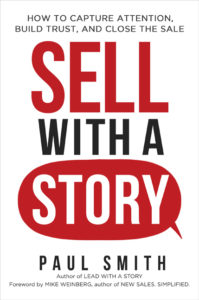Podcast (lead-with-a-story-podcast-series): Play in new window | Download | Embed
Subscribe: RSS
During their monthly meeting, a leadership team was discussing ways to increase compliance with the clean desk policy, starting with a debate over where the biggest violations were. It turned out, most violations were the results of documents left on the printers overnight. The vice presidents and directors took turns offering up ideas. One suggested writing a memo for the president to send out explaining why it’s so important to lock everything up at night. Other ideas were to hold a contest for the “cleanest” department, or maybe audit the floor one night a month and offer a prize to anyone who passed inspection 12 months in a row.
 When it was Martin Hettich’s turn to speak, he offered something very different. Over the phone from his office in Panama, he explained that last year his business unit was trying to cut expenses. Someone decided they were spending too much money on printer paper. The solution they came up with was to charge each department based on the number of sheets its employees used. But since everybody used the same network printers in the middle of each floor, they needed a convenient way to monitor how much paper each person was using.
When it was Martin Hettich’s turn to speak, he offered something very different. Over the phone from his office in Panama, he explained that last year his business unit was trying to cut expenses. Someone decided they were spending too much money on printer paper. The solution they came up with was to charge each department based on the number of sheets its employees used. But since everybody used the same network printers in the middle of each floor, they needed a convenient way to monitor how much paper each person was using.
Here’s what they came up with: Once you click the print button on your computer, you had to go to the printer and type in your employee number on the printer keypad. Then it would print out your document and send a charge to your budget. When people started getting billed for their paper, usage did go down, but only slightly—probably not enough to warrant the hassle of the new policy.
But there was an unexpected consequence of that policy, too, which turned out to be even more valuable than the money saved. The incidence of documents left out on printers overnight dropped practically to zero. It turned out that the main reason documents were left out wasn’t that people were too lazy to get them right away. It was because they just forgot about them after they clicked the print button. Now it didn’t matter if they forgot for a day or two. Their document wouldn’t print until they walked to the printer and typed in their employee number. Once they did that, they would just stand there and wait a few seconds for it to finish printing and take it with them. They certainly didn’t want to walk to the printer twice for each document.
Problem solved.
Compare that solution to the other suggested options. First, the mental one—having the president send out a memo explaining why it’s so important to lock things up. Certainly some percentage of the employees would find that rationale compelling and would change their behavior. But that wouldn’t work for everyone. Option two was the emotional one—appealing to their sense of pride by offering prizes and recognition to anyone who complied. That might also win some converts, but again, not everyone.
But Martin’s solution worked on just about everyone. It’s an example of what Chip Heath and Dan Heath call “clearing the path.” In their bestselling book Switch: How to Change Things When Change Is Hard, they discuss several deceptively simple ways to manage organizational change. One of them is exactly what Martin Hettich did.
Instead of using rational or emotional appeals, change the environment so it’s difficult or impossible not to change. In Switch, the authors offer a highly recognizable example for anyone who works in manufacturing—the secondary safety button. “Many factories use dangerous machines that have a bad habit of lopping off fingers or hands that are in the wrong place at the wrong time.” The solution is to design the machines so they can be operated only if two buttons are pressed at the same time—the main button, and the secondary.
The second button is located far enough away from the main button that you have to use both hands to press them at the same time. If your hands are pressing both buttons when the machine is operating, by design neither one can be in the danger zone at the wrong moment. They offer other similar examples, such as ATM machines that make you remove your card before you get your cash, and cars that won’t shift out of park unless your foot is on the brake.
Obviously there’s nothing wrong with appealing to your employees hearts and minds when making a change. The point is that there is a third option that might be even more effective. And perhaps you can use all three. The next time your organization is facing a major change, tell Martin’s story to your leadership team. Then spend some time coming up with ideas to clear the path for your employees. If done well, you’ll get great compliance to the change, and without any fingers getting lopped off.
[You can find this and over 100 other inspiring leadership stories in my book, Lead with a Story.]
—
 Paul Smith is one of the world’s leading experts on business storytelling. He’s a keynote speaker, storytelling coach, and bestselling author of the books Lead with a Story, Parenting with a Story, and Sell with a Story.
Paul Smith is one of the world’s leading experts on business storytelling. He’s a keynote speaker, storytelling coach, and bestselling author of the books Lead with a Story, Parenting with a Story, and Sell with a Story.


 Connect with him via email here.
Connect with him via email here.
Follow him on Facebook, LinkedIn, Twitter, and Instagram.
Sign up for his newsletter here to get one new story a week delivered to your inbox.

